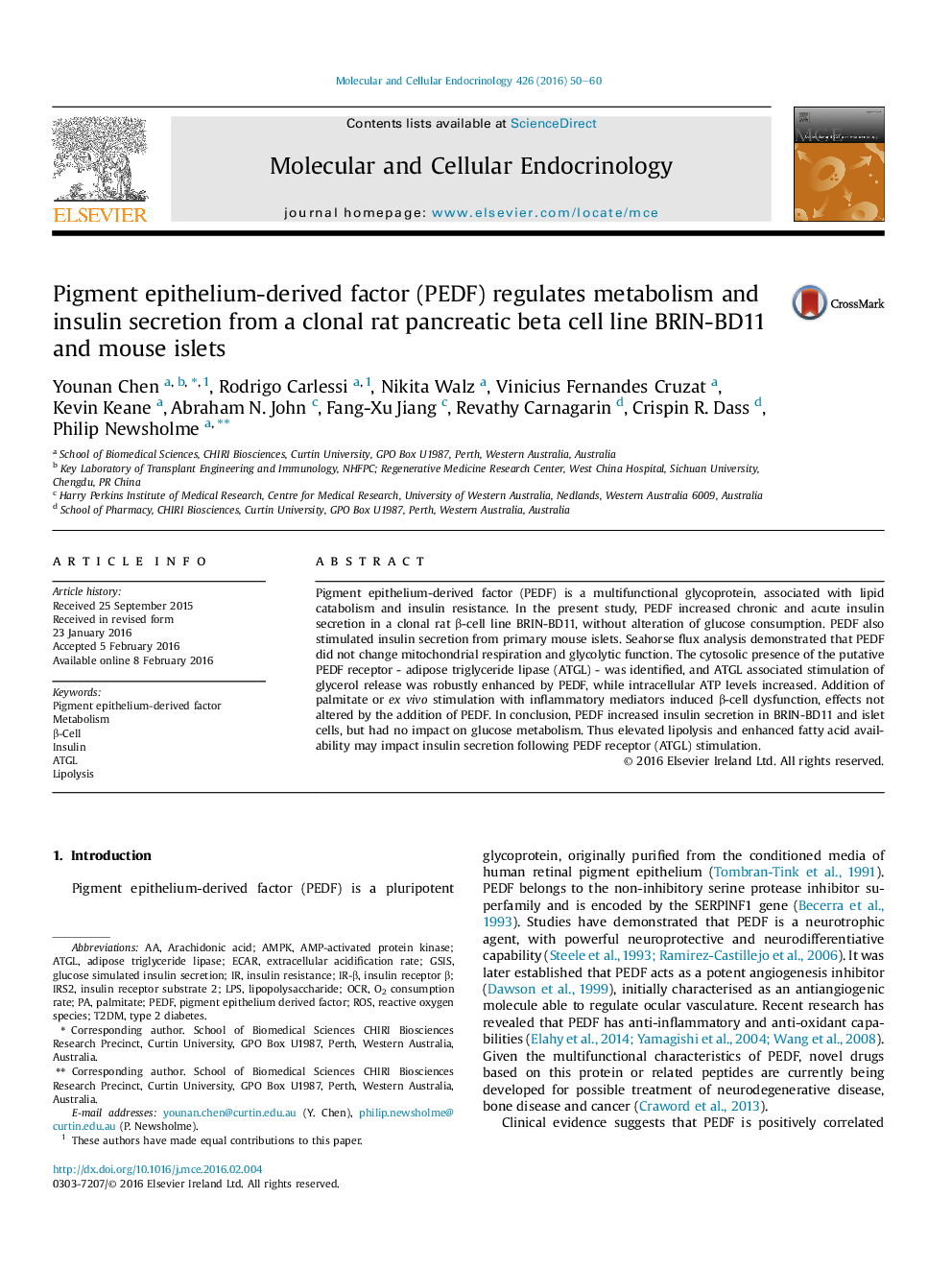| Article ID | Journal | Published Year | Pages | File Type |
|---|---|---|---|---|
| 2195594 | Molecular and Cellular Endocrinology | 2016 | 11 Pages |
•PEDF increased 24 h insulin secretion levels in a clonal rat β-cell line BRIN-BD11.•PEDF enhanced 24 h glycerol secretion and ATP production in BRIN-BD11 cells.•The insulinotrophic effect of PEDF did not alter glucose metabolism.•Elevated lipolysis via receptor ATGL may indirectly stimulate insulin secretion.•PEDF did not significantly impact palmitate or cytokine induced β-cell dysfunction.
Pigment epithelium-derived factor (PEDF) is a multifunctional glycoprotein, associated with lipid catabolism and insulin resistance. In the present study, PEDF increased chronic and acute insulin secretion in a clonal rat β-cell line BRIN-BD11, without alteration of glucose consumption. PEDF also stimulated insulin secretion from primary mouse islets. Seahorse flux analysis demonstrated that PEDF did not change mitochondrial respiration and glycolytic function. The cytosolic presence of the putative PEDF receptor - adipose triglyceride lipase (ATGL) - was identified, and ATGL associated stimulation of glycerol release was robustly enhanced by PEDF, while intracellular ATP levels increased. Addition of palmitate or ex vivo stimulation with inflammatory mediators induced β-cell dysfunction, effects not altered by the addition of PEDF. In conclusion, PEDF increased insulin secretion in BRIN-BD11 and islet cells, but had no impact on glucose metabolism. Thus elevated lipolysis and enhanced fatty acid availability may impact insulin secretion following PEDF receptor (ATGL) stimulation.
